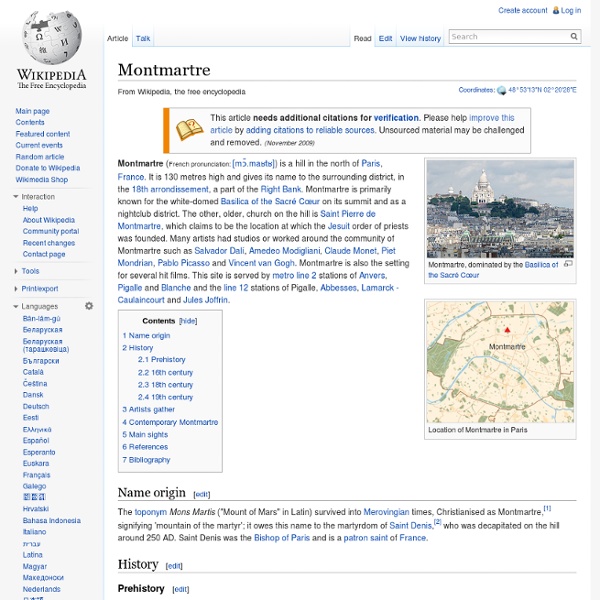Jardin du Luxembourg
This was the first French garden to be influenced by the Italian Baroque. The gardens, and the palace, were begun in 1612. The Luxembourg has long been seen as a quintessential Parisian space and remains very popular. It was designed for anoter Medici princess, Marie de Medici (1573-1642) , who became Queen of France. Like the Boboli garden where Marie had spent her youth, the Luxembourg plan has two axes at right angles. Jacques Boyceau superintended the layout.
Terrasse du Printemps | 64 boulevard Haussmann 9e
L’avis de Time Out Voilà une terrasse incroyable, avec une vue panoramique à 360°, vraiment accessible à tous les budgets. Sur le toit du splendide édifice du Printemps maison (ne vous trompez pas, il y a trois bâtiment), au 9e étage, cette terrasse est sans doute le meilleur plan pour ne pas se ruiner pour embrasser Paris d'un seul coup d'œil. Ici pas de grand champagne millésimé ou de cocktails chiadés, ni même une carte gastronomique. Auteur : Camille Griffoulières
I Prefer Paris: Le Marche des Enfants Rouges
Le Marche des Enfants Rouges is the oldest food market in Paris, built in 1615 under the rule of King Louis XIII. The name literally means “ Market of the Red Children” and in my research all I found was the name comes from a nearby 17th century orphanage where the children wore red uniforms. What that has to do with the price of cabbage, I don’t know, but the name has a mysterious, romantic air to it. Located in the chic northern part of the Marais, Le Marche des Enfants Rouges is a compact indoor market with a small iron-gate entrance that’s easy to miss if you aren’t looking for it. I arrived in the late afternoon and was starving for lunch. The nice thing about the market is that many of the stands sell fresh prepared food that you can eat on tables with cheerful plastic tablecloths spread out through the market. I was just about to start filling my basket so I could whip up a delicious dinner but darn!
Parc de Saint-Cloud
Un article de Wikipédia, l'encyclopédie libre. Cascade par Le Pautre (1660-1665) Le parc de Saint-Cloud officiellement domaine national de Saint-Cloud est un parc situé sur les communes de Saint-Cloud (majoritairement), Marnes-la-Coquette, Sèvres et Garches dans le département des Hauts-de-Seine, près de Paris. Le parc est connu pour abriter le pavillon de Breteuil qui contient le célèbre mètre-étalon. Localisation[modifier | modifier le code] L'entrée du Pré Saint-Jean Le parc de Saint-Cloud est situé au sud de la commune, à l'ouest du bras de la Seine, principalement sur le territoire de la commune de Saint-Cloud et secondairement au sud sur les territoires des communes de Marnes-la-Coquette et de Sèvres. le domaine national de Saint-Cloud, domaine appartenant à l’État,le pré Saint-Jean, vaste stade sportif appartenant au conseil général des Hauts-de-Seine. Administration[modifier | modifier le code] Le domaine est placé sous l'autorité du « Conservateur du domaine du parc de Saint-Cloud ».
Paris Grand Siècle
Hotel de la marquise de Rambouillet : rue st thomas du Louvre Le salon "précieux" de Catherine de Vivonne, « l’incomparable Arthénice », anagramme (coutume très en vogue à cette époque dans le monde littéraire) de « Catherine »), une des personnalités féminine... Le salon "précieux" de Catherine de Vivonne, « l’incomparable Arthénice », anagramme (coutume très en vogue à cette époque dans le monde littéraire) de « Catherine »), une des personnalités féminines les plus marquantes de son temps, fut l’un des plus brillants de son époque: Elle recevait (allongée sur son lit) pour des joutes grammaticales ou rire de la réforme du langage : Chapelain, Tallement des Réaux, Cavelier Marin, Richelieu, Voiture, Benserade,Vaugelas, Racan, Mme de la fayette, Bussy-Rabutin, Mme de Sévigné, Corneille, Bassompierre, la duchesse de Longueville, la duchesse de Chatillon ...... Le salon ferme en 1650 avec la Fronde.
Liste des ponts de Paris
Un article de Wikipédia, l'encyclopédie libre. La ville de Paris comprend de nombreux ponts, essentiellement au-dessus de la Seine, mais également au-dessus de ses canaux par exemple. Statistiques[modifier | modifier le code] En 2009, Paris comptait[1] : 37 ponts au-dessus de la Seine ;58 ponts utilisés par des voies parisiennes en dehors de ceux au-dessus de la Seine ;10 ponts utilisés par la RATP ;33 ponts utilisés par la SNCF ;148 ponts au-dessus du boulevard périphérique ;49 passerelles piétonnes. Seine[modifier | modifier le code] Paris comporte 37 ponts au-dessus de la Seine. Vue vers l'aval depuis la Tour Eiffel, montrant, de bas en haut, le pont de Bir-Hakeim, le pont Rouelle, le pont de Grenelle et le pont Mirabeau Jusqu'en 1878, existait également le pont Saint-Charles[2] (entre la rive gauche et l'Île de la Cité, démoli en 1878 en même temps que l'Hôtel-Dieu dont il faisait partie). Canaux parisiens[modifier | modifier le code] Pont de la rue de l'Ourcq
Le 18ème élu meilleur arrondissement
“À chacun sa banlieue, la mienne, je l’aime et elle s’appelle le 18ème!” Et oui petits bonbons vous avez élu (par FB) le 18ème meilleur arrondissement de Paris. Et vous avez bien raison ! Pour ceux qui ne seraient pas encore conquis par cette contrée bien famée, mais aussi pour ceux qui l’aiment déjà, on vous a fait un récap. Voici quelques TOPS adresses qui font la réputation de notre “tiéquar” préféré. Se Nourrir - LE meilleur bo-bun de Paris - Le restaurant vietnamien “La Colline d’Asie” fait un Bo-bun que tous les pros de Paris essayent d’égaler. La Colline d’Asie © @gracefromparis Respirer - Les vignes de Montmartre - A quelques pas du Sacré Coeur, en vous perdant dans les rues avoisinantes, vous tomberez sur les vignes. Sortir - Place Paul ALbert - Avec vue sur le square et la basilique du sacré coeur, les 3 bars-restaurants de la place sont les endroits rêvés pour faire la fête (semaine et week-end). - L’Escale - Pintes de bière et mojitos à 5€. Brasserie de La Goutte d’Or



